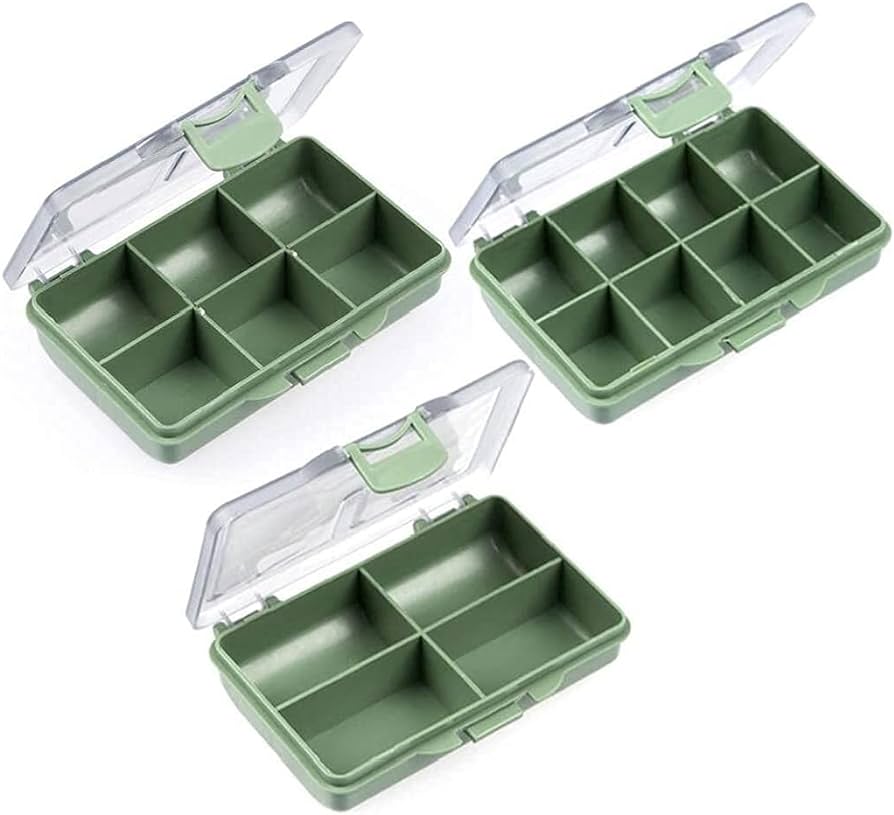Bait is more than just something to dangle on a hook – it’s the key to attracting fish and reeling in that big catch. However, bait that’s been poorly stored can quickly turn from an asset to a liability.
Let’s dive into why proper bait storage matters and how to do it right.

Freshness is Key
Ever opened a container of old leftovers and recoiled at the smell? Fish have a similar reaction to stale bait. Improperly stored bait loses its scent and flavour, becoming much less enticing to your target species. The result? Fewer bites and a lot of wasted time on the water.
To maximize freshness, store bait in a cool, dark place. Refrigerators are ideal for most bait types, but some (like live worms) might need specialized worm bedding or soil to thrive.
Prevent Unwanted Guests
Improper bait storage can attract more than just fish. Insects, rodents, and other pests are drawn to the smell and can quickly turn your bait storage area into their buffet. Not only is this unsanitary, but it can also lead to infestations in your home or vehicle.
Tightly sealed containers are your first line of defence. Choose durable plastic or metal containers with secure lids. For live bait, consider containers with small ventilation holes to provide air circulation without giving pests an easy way in.
Check Containers for Damage
Before each fishing trip, inspect your bait containers for signs of damage. Cracks, holes, or chewed edges could indicate that pests have already gotten in. If you find any damage, it’s time to replace the container and dispose of the bait safely.
Damaged bait containers could be a sign of a larger pest problem. If you suspect an infestation, consider contacting a pest control professional for assistance. A company like Integrum specializes in 24/7 pest control services and can help you get the situation under control.
Choose the Right Storage Method for Different Bait Types
Just like fish, different bait types have different needs. Proper storage ensures your bait stays fresh and effective:
Live Bait (Worms, Minnows, Crawfish)
These little guys need more than just a container.
- Worms: Keep them cool and content in a refrigerator using specialized worm bedding (available at bait shops). This keeps them moist and healthy. Avoid soil from your garden, as it can contain harmful chemicals.
- Minnows: These lively baitfish need clean, oxygenated water. Use a bait bucket with an aerator, or change the water frequently. Keep the bucket in a cool, shady spot.
- Crawfish: Store them like minnows, but be sure the container is escape-proof! Crawfish are notorious for their climbing skills.
Remember, happy bait equals happy fish, so make sure your live bait has the right environment to thrive.
Frozen Bait (Shrimp, Squid, Fish Pieces)
The key here is to keep it frozen solid until you’re ready to cast.
- Storage: Your home freezer is perfect. Make sure the bait is tightly wrapped to prevent freezer burn, which dries it out.
- Thawing: Take out only what you need for each trip. Thaw it in the refrigerator or a cooler with ice. Never refreeze thawed bait.
Pro Tip: Use a small cooler for bait on the boat. This keeps it cold and contained, ready for action.
Prepared Bait (Dough Baits, Chum, Dip Baits)
These often have strong scents that fish (and pests) love.
- Airtight is Key: Use containers with tight-fitting lids to lock in the smell and prevent spoilage.
- Cool and Dry: Store them in a cool, dark cupboard or pantry. Avoid high temperatures or humidity, as this can make them go bad faster.
- Check Before You Go: Always give prepared baits a sniff before using them. If they smell off, toss them.
Remember, fresh bait is the most effective bait, so keep an eye on those expiration dates and use your senses to check for spoilage.
Artificial Bait (Lures, Flies, Soft Plastics)
While they won’t rot, these still need care to stay in top shape.
- Tackle Boxes are Your Friend: Use a tackle box with compartments to keep different types organized and prevent tangles.
- Soft Plastics: Store these separately. Some anglers even use special scent-preserving bags to keep them from drying out or absorbing other odours.
- Protect Hooks and Points: Sharp points can snag and get dull. Use hook covers or store them in a way that prevents them from bumping into each other.
By tailoring your storage to each bait type, you’ll ensure that every cast is as tempting as possible to the fish below the surface.
Organization is Your Friend
Imagine rummaging through a jumbled tackle box, trying to find the right bait while the fish are biting. Frustrating, right? Organized bait storage saves time and ensures you have the right bait at your fingertips when you need it.
Consider using labelled containers or compartments for different types of bait. Invest in a good fishing tackle box with various-sized compartments to keep everything in its place.
Beyond the Basics: Tips for Bait Storage Pros
Now that you’ve got the essentials down, here are a few bonus tips to level up your bait storage game:
- Don’t overbuy bait: Only purchase the amount you’ll realistically use on your fishing trip. This prevents waste and saves you money.
- Freeze extra bait: If you have leftover bait that you won’t use right away, freeze it for later. This extends its shelf life and ensures you have bait on hand for your next adventure.
By following these additional tips, you can further optimize your bait storage and make the most out of your fishing experience.
The Bottom Line
Proper bait storage isn’t just about convenience – it’s a crucial factor in your fishing success. By keeping your bait fresh, pest-free, and organized, you’ll increase your chances of landing that trophy catch. So, the next time you head out on the water, remember that a little extra care with your bait can go a long way.
